Pokémon Brilliant Diamond and Pokémon Shining Pearl are remakes of 2006’s beloved Pokémon Diamond and Pokémon Pearl, respectively. With a fifteen-year gap and Pokémon’s track record of (mostly) fantastic remakes, do these fresh, new takes live up to expectations? Not quite. But that’s not to say the game is not enjoyable, either.
Pokémon Brilliant Diamond and Pokémon Shining Pearl were not actually developed by Game Freak this time around, the studio that previously created every other main-line Pokémon title, including the original Diamond and Pearl. Instead, these titles were produced by ILCA (I Love Computer Art), a small development studio based in Japan. ILCA previously produced assets for games such as Yakuza 0, Dragon Quest 11, Ace Combat 7 and Nier Automata, as well as assisting in the production of Pokémon Home. But with no fully-developed games under their belt, fans were sceptical about ILCA’s capability to produce such a large title.
The game follows the timeless Pokémon formula; catch and collect Pokémon, battle them across a region, defeat 8 Gym Leaders and finally face the Elite Four and defeat the Champion – all while dealing with a criminal organisation in ridiculous outfits with an equally ridiculous and outlandish motive. It works, and it has done for 25 years, however, each title in the series has refined and improved on the formula, including past remakes. Pokémon Brilliant Diamond and Shining Pearl, instead, feel like a step backwards from modern titles.
Gameplay
The game’s overworld, trainers, story and general gameplay in Pokémon Brilliant Diamond and Shining Pearl are near identical to that of the original Diamond and Pearl, albeit with some features altered to fit the fifteen-year gap in technology and hardware, as well as to fit in with the current Pokémon generation’s mechanics. Sinnoh, the game’s region, can be traversed without the four-direction limitation of the original titles and does make the movement smoother and more natural feeling, but can also, at times, feel awkward in smaller areas that are specifically designed for a different type of movement. It was particularly easy to constantly bump into doors, ledges and struggle to simply walk up stairs on the first go. The player does have the option of moving traditionally using the D-Pad, but it’s a rough transition from playing other Pokémon titles on the Switch. Sinnoh remade in the style of Pokémon Sword and Shield‘s ‘Galar’ would’ve been a much-preferred choice for movement, as well as providing a new perspective on a beloved region.
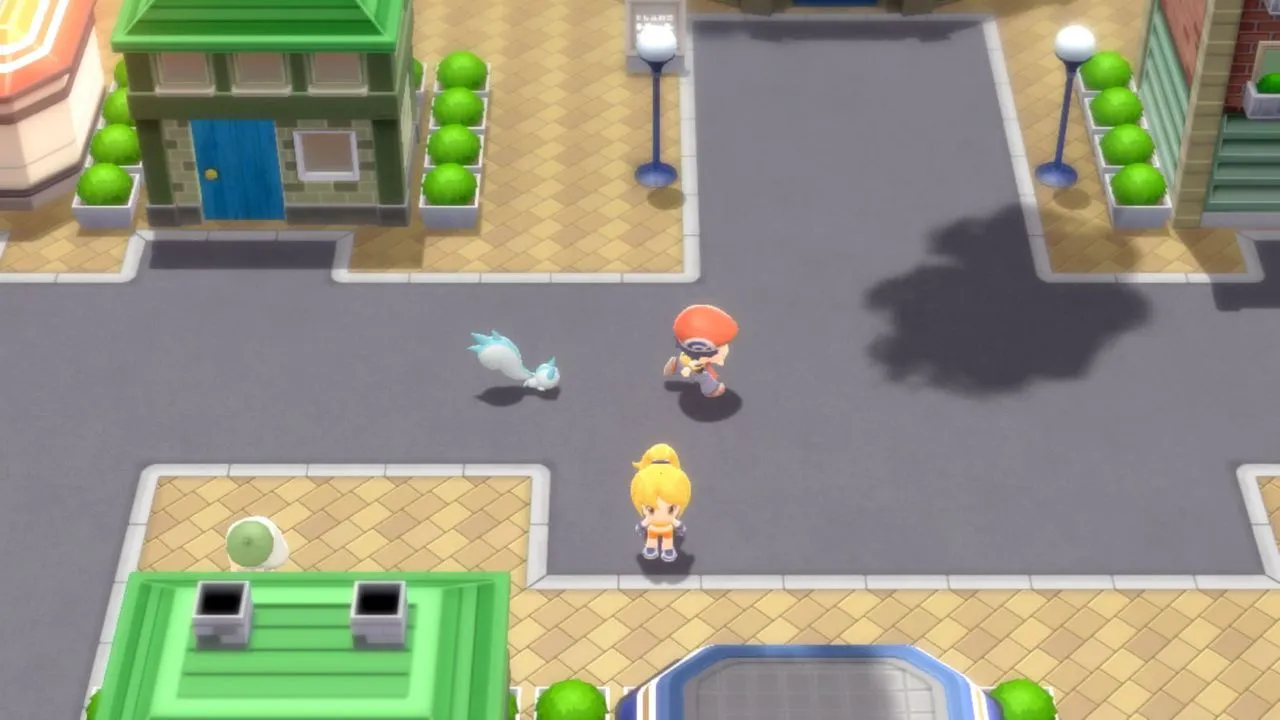
Pokémon can also walk with the player, a feature that’s been heavily requested by fans to return. While this is amusing for a short time, it became more of an obstruction than an enjoyable, harmless feature fairly quickly. They would constantly block paths or slow our characters down, due to the game considering them solid objects, which made the already finicky movement even more frustrating.
Battles themselves work in the same way as Pokémon‘s latest release: Sword and Shield, but the UI is stylised similarly to the original titles, and works well as a nostalgic callback. The inclusion of moves indicating whether or not they are effective is a welcome addition from previous modern titles that the original games didn’t have. The inclusion of Fairy-type Pokémon and moves also aids in balancing battles, especially later on in the game. We’re looking at you, Spiritomb.
The Pokétch, a smartwatch-like device full of handy applications, now appears in the top right of the screen and can be controlled using a cursor manipulated by the thumbstick, or via the Nintendo Switch’s touchscreen in handheld mode. While not as useful as it was in 2006, now that we have access to a wider range of resources and smartphones, the way this feature, which was designed for the Nintendo DS’s bottom screen, is incorporated into the Switch is impressive.
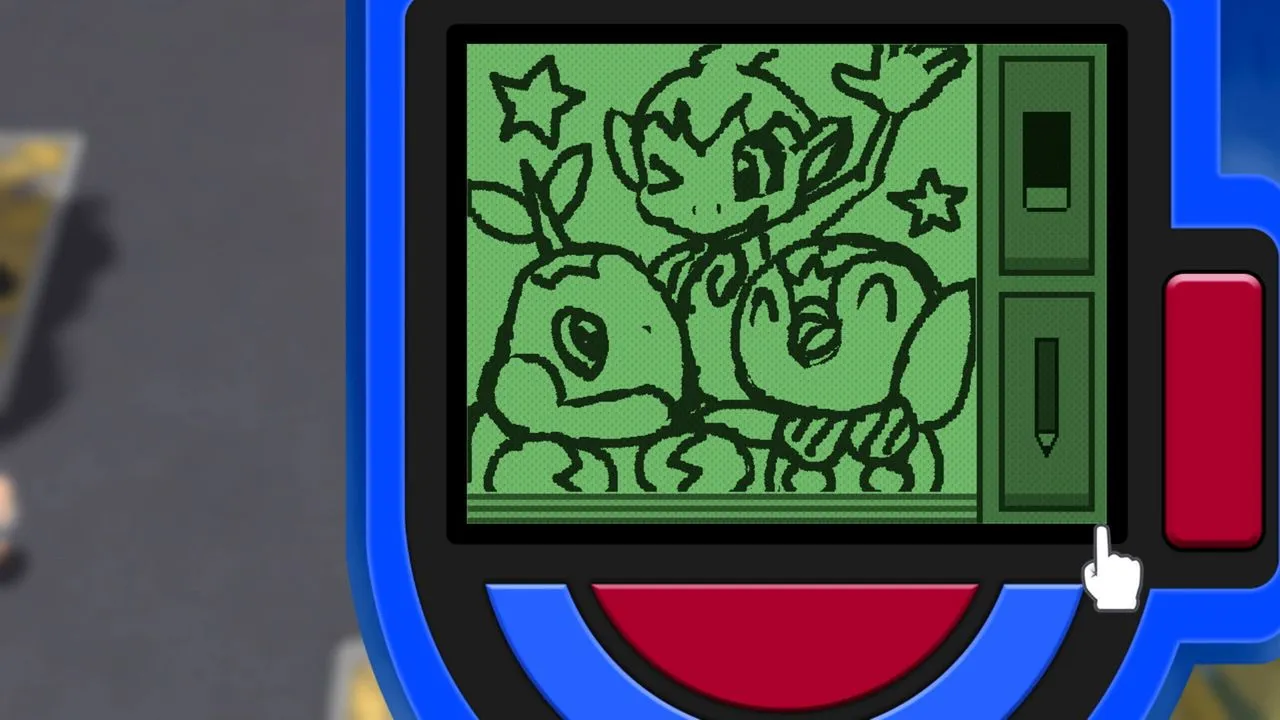
TMs, items used to teach Pokémon moves, are one-use-only again. While it is an old feature that seemed unnecessary to revert, it didn’t cause any problems during our playthroughs. Hidden Moves (HMs), which were moves that Pokémon had to learn for the player to journey across certain parts of the world, have been removed. Instead, the player uses an app on the Pokétch to summon a wild Pokémon to overcome whatever obstacle is in the player’s way. This is a prime inclusion that makes the overall experience more enjoyable, and also frees up space in your party and allows for a grander choice of moves your team can learn. There’s no need to keep around that Bibarel or Staraptor anymore. Sorry, guys.
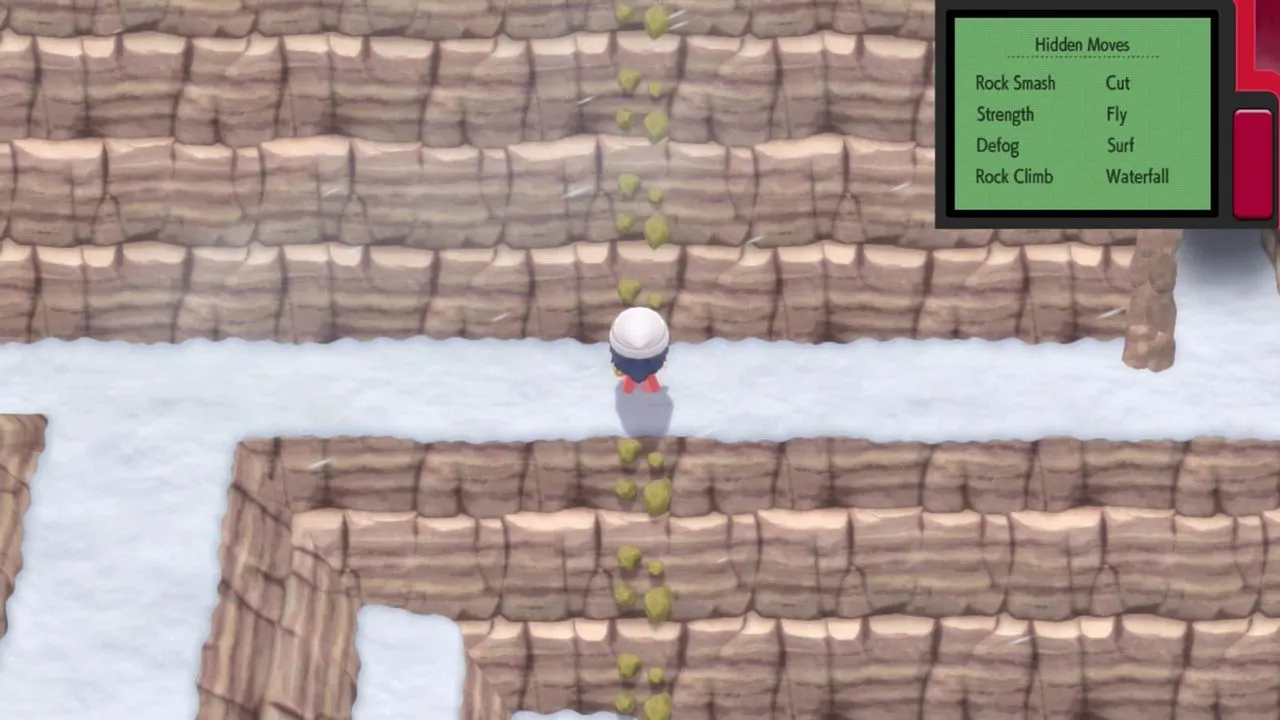
Pokémon Choice, Random Encounters and Trainer Battles
Unfortunately, while Pokémon Brilliant Diamond and Shining Pearl do take advantage of a fair few modern changes to the series, they can also stay true to the original Diamond and Pearl to a fault. Pokémon available in the wild are the same as Diamond and Pearl, completely ignoring the revisions that Pokémon Platinum made, which was a third title released two years after Pokémon Diamond and Pearl and managed to amend most of their flaws. The available Pokémon are unbalanced and leave little choice in certain aspects of teambuilding. A great example of this would be the ratio of Fire-type to Water-type Pokémon. Ignoring the starter Pokémon, as you can only choose one, there are twenty-three different Water-types available and only two Fire-types, which are both in the same evolutionary family.
The Grand Underground, which we will get to later, does offer more choices in Pokémon species than the original titles, but the overall choice is still lacking. NPCs only use Pokémon found above ground, which results in a lot of fights feeling the same, and even thematically wrong at times. The “Fire-type” Elite Four member only has two Fire-type Pokémon in his team of five, despite having a full Fire team in Pokémon Platinum. The lack of diversity in Pokémon species, paired with random encounters, make scouring through routes, caves and forests a complete chore. The excitement of finding new species simply doesn’t exist when most Pokémon species are the same, or just aren’t useful. Not adopting the system of having Pokémon roam the region naturally that Pokémon Let’s Go Pikachu, Let’s Go Eevee, Sword and Shield have is possibly the most disappointing aspect of these remakes. Not only due to the annoyance of random encounters in this game, but also because it makes the world seem much less alive.
The Grand Underground and Optional Activities
There are many optional activities that set the Sinnoh games apart from others in the franchise. The first of which is the ‘Grand Underground‘, which was just named the “Underground” in the original titles and was a beloved feature. Here, players can venture underneath Sinnoh to hunt for Pokémon that aren’t available – or extremely rare- above ground in ‘hideaways’, which do feature roaming Pokémon and no random encounters. You can also dig for treasure in the walls by selecting tiles to excavate on a grid; too many hits and the wall will come crumbling down, leaving any items you didn’t obtain behind. What can be dug up includes: useful items your Pokémon can use, evolutionary stones, fossils that can be resurrected into extinct Pokémon, shards that can be traded for items and, finally, statues.
Statues can be placed in your Secret Base, which are personal rooms that can be created anywhere in the Grand Underground that can even be visited by online players. Placing statues of a specific Pokémon-type improves your odds of finding Pokémon of the same type in the Underground, making specific searches significantly easier. Alas, Secret Bases can only be decorated with statues. This is a colossal step-back from the original titles, in which the player could kit out their base with a plethora of interesting and unique furnishings, along with a flag that can be stolen by players online for rewards. Secret Bases are now, instead, diminished into being lifeless rooms that statues are thrown in for the pure purpose of hunting down Pokémon.
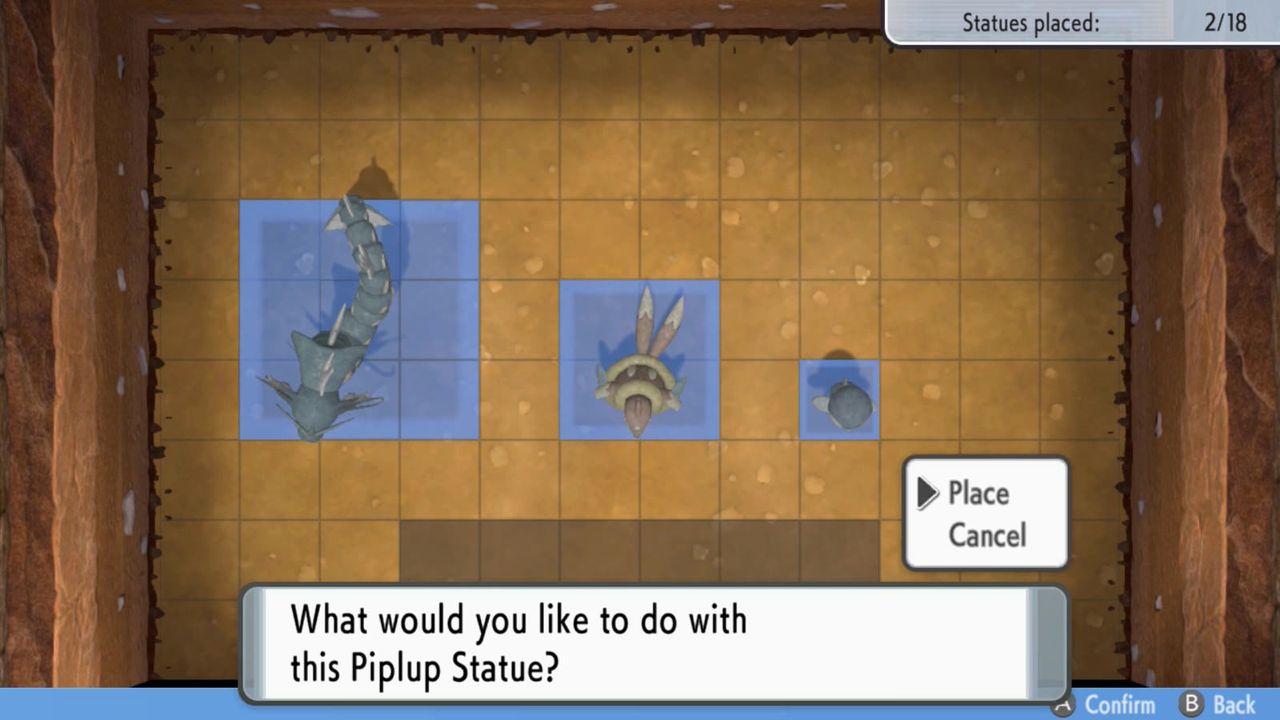
There is very little life to The Grand Underground in the remakes, in fact. While you can see other players in real-time when playing online, there is no player-to-player interaction like in Diamond and Pearl, other than being able to dig in the same spot. While the nostalgia kicks in and the Grand Underground may be all you do for two hours straight, it dwindles into a place you only visit every once in a while to catch a Pokémon that can’t be found above ground.
Pokémon Contests also return, but have drastically changed. The dress-up mechanic has been removed and the contests now revolve around a very simple rhythm-based minigame, in which the player has to press a button in time for moving circles to meet a static circle in time with the music. While Contests were never spectacular, game-selling features for most of us, its iteration in Pokémon Brilliant Diamond and Shining Pearl feels much too rudimentary and ultimately boils down to just pressing a button in time. If properly developed upon, such as including longer segments, varying visuals and a choice of different music, this could’ve been an excellent feature.
Finally, there is also Poffin making, which involves twirling the thumbstick, or your finger on the touchscreen, to create treats for your Pokémon that increase a specific stat (or stats) to perform better in Contests. While it’s a neat little feature, it’s nothing to write home about.
Narrative
The story of the games is exactly the same as the original titles. A young trainer is tasked with seeing as many Pokémon as possible, embarks on a journey to defeat Sinnoh’s Champion and has to deal with the villainous Team Galactic in the process. The narrative is extremely simple and rather unexciting, and the ‘chibi’ art style doesn’t aid it, either. Most characters are only memorable due to their full-body designs, rather than their personalities or actions. There’s no real emotional connection to any of the characters and the story mostly serves as providing a simple explanation of why certain areas are inaccessible until you get further. Team Galactic is very underdeveloped, which is a real shame when there is so much potential. Story revisions from Pokémon Platinum are, sadly, completely absent.
Difficulty
Hard difficulty is not something the Pokémon franchise is known for, and Pokémon BDSP is significantly easier than its previous iteration. ‘Exp. Share’ is active for the entire Pokémon party, ensuring that every Pokémon in your party is at a similar level. Its inclusion allows you to use your party equally and eliminates the need to grind and a feature we enjoyed using, although, the option to toggle this off would’ve been an appreciated feature for fans that desire a challenge. The ‘friendship’ mechanic eases the difficulty even more, as your Pokémon will prevent one-hit-knock-outs, heal its own status conditions and inflict more critical hits.
Rematching the Elite Four, on the other hand, is actually one of the most challenging things we’ve experienced in a Pokémon title. We won’t spoil what it entails here, but expect competitive-level Pokémon and well-balanced teams.
Post-Game and Missing Features
The post-game is rather limited in Pokémon Brilliant Diamond and Shining Pearl. There is no continuation to the story, other than seeing some characters for a few boxes of dialogue occasionally, and no extra narrative content like in previous Pokémon remakes. Legendary Pokémon are available to hunt, but have no storylines attached to them. Ramanas Park, a new feature that allows the player to catch legendary Pokémon from Generation 1-3, is a good feature for newer players, but the monotonous grinding it required in the Grand Underground doesn’t make it a particularly fun experience if you already own them in Pokémon Home.
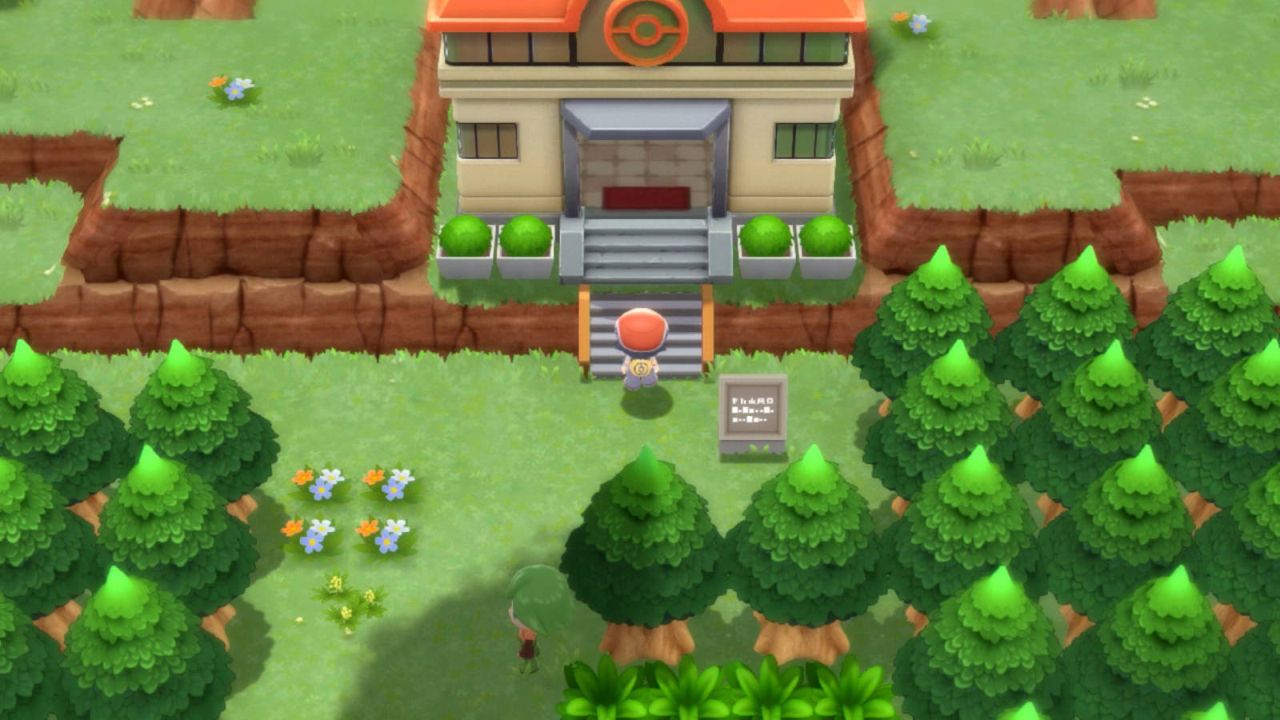
Speaking of Pokémon Home; it has no support until next year. While this is disappointing, it was expected and is generally the case for new releases. Only Pokémon from Generation 1-4 are present in Brilliant Diamond and Shining Pearl, which is disheartening when there have been 4 more generations in the gap between the originals and the remakes. The inclusion of newer Pokémon would’ve helped with balance issues and provided more of a reason to continue playing the game after the story has concluded.
The Battle Tower replaces the Battle Frontier and consists of the player challenging NPCs to consecutive battles to earn BP (Battle Points), which can be spent on items. While it definitely provides a challenge down the line, it gets very repetitive after a short while, and the rewards don’t seem worthwhile when there is no competitive mode to use the items in.
It’s also worth noting that there are future features that aren’t currently present in the game, but will be added for free at a later date. This includes the ‘GWS’ – a replacement to the GTS that allows players to trade Pokémon at random across the world – a ‘Colosseum Mode’ and the ability to have more than one person in the online trade rooms. These are minor features that don’t particularly impact much, but it does beg the question of how rushed ILCA were to get these games out on time. Characters in the overworld mention the GWS as if it were open, and the NPC for the Colosseum is present in every Pokémon Center, too. It seems these features were meant to launch with the game, but were unable to for no specified reason.
Visuals
Pokémon Brilliant Diamond and Shining Pearl attempt to replicate the spritework of the original titles in the overworld, but doesn’t quite hit the mark. While the character designs are cute, they fail to capture the charm of 2D sprites, and the scale of the world feels limited and poorly executed in a 3D format. There is also a blurred effect in areas such as caves and forests that, put bluntly, looks substandard, and takes away from the scenery. Battles, on the other hand, look great. The lighting and backgrounds have improved rather significantly compared to previous titles, and the character models of both the characters and Pokémon look just as good as they did in Sword and Shield.

Audio
The music is mostly very well produced and heavily improves the original tracks. The only gripe we have with the soundtrack is the poor sounding trills at the beginning of encounters and a little less bass than the originals, but overall gets a thumbs up from us. The sound effects are generally all high-quality versions of the DS’ and provide a sense of nostalgic familiarity without sounding too dated. The constant, piercing beeping sound when a Pokémon is low health has finally been removed and, instead, only plays a light beeping sound briefly once.
Performance
The framerate stayed at a constant 30 FPS and we never experienced a single dip in our playthroughs. There were times where the game would spend an extra second or so loading a wild encounter, but the experience was as smooth as it could be with the Nintendo Switch’s hardware. We had no negative experiences with connectivity when playing online, either.
Conclusion
Overall, Pokémon Brilliant Diamond and Shining Pearl are perfectly decent Pokémon games, but feel like a significant step back when compared to newer titles and the quality of previous Pokémon remakes. It relies too heavily on the Pokémon formula always providing a decent game, but doesn’t bring much else to the table. The features removed from the originals, as well as ILCA completely ignoring the revisions that Pokémon Platinum already made thirteen years ago heavily impacted the overall enjoyment of the games. With more time in the oven, Pokémon Brilliant Diamond and Shining Pearl could’ve been exceptional titles, but the end product felt undercooked and games that will be inevitably pushed to the side when the next game releases.
Pokémon Brilliant Diamond and Pokémon Shining Pearl are available now for Nintendo Switch.


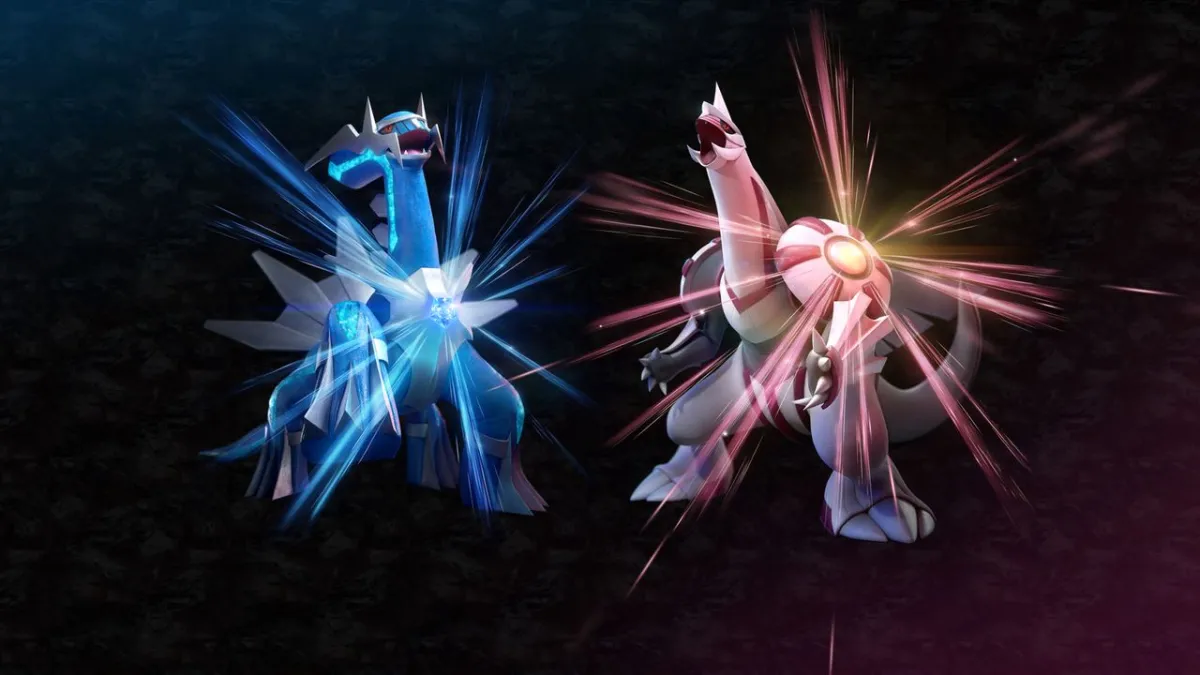









Published: Nov 26, 2021 05:55 pm